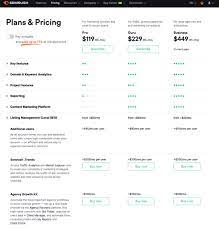E-Commerce SEO: Unlocking the Potential for Online Success
In today’s digital age, e-commerce has become an integral part of our lives. With the convenience of online shopping, businesses are constantly striving to improve their online presence and increase their visibility to attract more customers. One powerful tool that can make a significant difference in this pursuit is e-commerce SEO (Search Engine Optimization).
E-commerce SEO refers to the process of optimizing an online store’s website and product pages to rank higher in search engine results. By implementing effective SEO strategies, businesses can improve their organic search visibility, drive targeted traffic, and ultimately increase sales.
So, how does e-commerce SEO work? Let’s delve into some key aspects:
Keyword Research:
Keyword research is the foundation of any successful SEO campaign. By identifying relevant keywords and phrases that potential customers use when searching for products or services, businesses can optimize their website content accordingly. This includes incorporating keywords into product titles, descriptions, headings, and URLs.
On-Page Optimization:
On-page optimization involves optimizing various elements on individual web pages to enhance their visibility in search results. This includes optimizing meta tags (title tags and meta descriptions), using descriptive alt text for images, improving page load speed, ensuring mobile responsiveness, and creating user-friendly URLs.
High-Quality Content:
Content plays a crucial role in e-commerce SEO. Creating unique and engaging product descriptions with relevant keywords not only helps with search engine rankings but also provides valuable information to potential customers. Additionally, incorporating a blog section on your e-commerce site allows you to regularly publish informative articles related to your industry or products.
Link Building:
Building high-quality backlinks from reputable websites is an essential aspect of off-page SEO for e-commerce businesses. These links act as votes of confidence from other websites and can significantly impact search engine rankings. Engaging in guest blogging, influencer collaborations, or reaching out to industry publications can help acquire valuable backlinks.
User Experience:
User experience (UX) is a critical factor in e-commerce SEO. Search engines prioritize websites that offer a seamless and enjoyable experience to users. Optimizing website navigation, improving page load speed, ensuring mobile responsiveness, and providing clear calls-to-action can enhance the overall user experience and increase conversions.
Technical SEO:
Technical SEO focuses on optimizing the technical aspects of a website to improve its search engine visibility. This includes optimizing website structure, implementing schema markup for product information, creating XML sitemaps, improving site crawlability, and ensuring proper indexing of web pages.
Monitoring and Analysis:
Regularly monitoring and analyzing the performance of your e-commerce SEO efforts is essential for ongoing success. Utilize tools like Google Analytics to track website traffic, user behavior, conversion rates, and other key metrics. This data will help you identify areas for improvement and make data-driven decisions to optimize your e-commerce strategy further.
In conclusion, e-commerce SEO is a powerful tool that can significantly impact the success of online businesses. By implementing effective strategies such as keyword research, on-page optimization, high-quality content creation, link building, prioritizing user experience, technical optimization, and continuous monitoring and analysis, businesses can unlock their full potential in the competitive online marketplace.
Remember that SEO is an ongoing process that requires consistent effort and adaptation to stay ahead of competitors. By investing in e-commerce SEO practices today, businesses can pave the way for long-term growth and success in the dynamic world of online retailing.
7 Essential FAQs on E-commerce SEO: Optimizing Websites, Product Descriptions, Tracking Performance, Ranking Factors, Speed & Performance, and Building Quality Backlinks
- How can I optimize my e-commerce website for SEO?
- What are the best practices for e-commerce SEO?
- How do I create effective product descriptions for SEO?
- What tools should I use to track and measure my e-commerce SEO performance?
- What are the most important ranking factors in e-commerce SEO?
- How can I improve my website’s speed and performance for better e-commerce SEO results?
- What strategies should I use to build high quality backlinks for my e-commerce website?
How can I optimize my e-commerce website for SEO?
Optimizing your e-commerce website for SEO is crucial to improve its visibility in search engine results and attract targeted organic traffic. Here are some key strategies to help you optimize your e-commerce website for SEO:
- Conduct Keyword Research: Identify relevant keywords and phrases that potential customers use when searching for products or services. Use keyword research tools to find high-volume and low-competition keywords, and incorporate them strategically into your website content.
- Optimize Product Titles and Descriptions: Include targeted keywords in your product titles, meta tags, headings, and descriptions. Make sure the content is unique, descriptive, and compelling to both search engines and users.
- Create Unique Product URLs: Use descriptive URLs that include relevant keywords instead of generic ones. This helps search engines understand the content of the page and improves its visibility in search results.
- Optimize Image Alt Text: Include descriptive alt text for images on your product pages. This not only helps visually impaired users but also provides an opportunity to include relevant keywords.
- Improve Site Speed: Website speed is a crucial ranking factor. Optimize your website’s load time by compressing images, minifying code, leveraging browser caching, and using a reliable hosting provider.
- Ensure Mobile Responsiveness: With the increasing use of mobile devices for online shopping, having a mobile-responsive website is essential. Make sure your website adapts seamlessly to different screen sizes and provides a user-friendly experience on mobile devices.
- Enhance User Experience (UX): Prioritize user experience by optimizing navigation menus, improving site structure, providing clear calls-to-action (CTAs), simplifying the checkout process, and offering a secure payment gateway.
- Implement Structured Data Markup: Use schema markup to provide search engines with additional information about your products, such as prices, ratings, availability, etc. This can enhance the visibility of your products in rich snippets or knowledge panels in search results.
- Build High-Quality Backlinks: Earn high-quality backlinks from reputable websites in your industry. This can be achieved through guest blogging, influencer collaborations, partnerships, or creating valuable content that others will naturally link to.
- Regularly Publish Engaging Content: Incorporate a blog section on your e-commerce website to regularly publish informative and engaging content related to your industry or products. This not only attracts organic traffic but also establishes you as an authority in your niche.
- Monitor and Analyze Performance: Use tools like Google Analytics to track website traffic, user behavior, conversion rates, and other key metrics. Analyze the data to identify areas for improvement and make data-driven decisions for further optimization.
Remember that SEO is an ongoing process, and it’s important to stay up-to-date with the latest trends and algorithm changes. By consistently implementing these strategies and continuously monitoring your website’s performance, you can optimize your e-commerce website for SEO success.
What are the best practices for e-commerce SEO?
When it comes to e-commerce SEO, there are several best practices that can help improve your online store’s visibility and drive more organic traffic. Here are some key practices to consider:
- Keyword Research: Conduct thorough keyword research to identify relevant keywords and phrases that potential customers use when searching for products. Focus on long-tail keywords that have lower competition but higher intent.
- On-Page Optimization: Optimize your product pages by incorporating target keywords in the page titles, meta descriptions, headings, and URLs. Ensure that your content is unique, descriptive, and provides valuable information to users.
- Site Structure and Navigation: Create a logical site structure with clear categories and subcategories. Implement user-friendly navigation menus and breadcrumbs to make it easy for visitors to explore your website.
- Mobile Responsiveness: With the increasing number of mobile users, ensure that your e-commerce site is fully responsive and provides a seamless experience across different devices. Mobile-friendliness is also a ranking factor in search engines.
- High-Quality Product Descriptions: Craft unique and compelling product descriptions that highlight the features, benefits, and unique selling points of each item. Avoid using manufacturer-provided descriptions as they may be duplicated across multiple websites.
- Image Optimization: Optimize product images by compressing them for faster loading times without compromising quality. Use descriptive alt text for images to provide context for search engines.
- User Reviews: Encourage customers to leave reviews on your product pages as they provide social proof and can improve search engine rankings. Responding to reviews also shows engagement with customers.
- Internal Linking: Implement internal links between related products or categories within your e-commerce site to improve navigation and distribute link authority throughout your website.
- External Link Building: Acquire high-quality backlinks from reputable websites through outreach campaigns or collaborations with influencers or industry publications. These backlinks help improve search engine rankings.
- Schema Markup: Implement schema markup to provide search engines with additional information about your products, such as price, availability, ratings, and reviews. This can enhance the visibility of your listings in search engine results.
- Site Speed Optimization: Improve page load speed by compressing images, leveraging browser caching, minimizing JavaScript and CSS files, and using a content delivery network (CDN) if necessary. Faster-loading sites tend to have better user experiences and higher search engine rankings.
- Continuous Monitoring and Analysis: Regularly monitor your website’s performance using tools like Google Analytics. Analyze key metrics such as traffic sources, conversion rates, bounce rates, and keyword rankings to identify areas for improvement and make data-driven decisions.
Remember that e-commerce SEO is an ongoing effort that requires continuous optimization and adaptation. By following these best practices, you can enhance your online store’s visibility in search engine results, attract more qualified traffic, and ultimately drive more sales.
How do I create effective product descriptions for SEO?
Creating effective product descriptions that are optimized for SEO can greatly enhance your e-commerce website’s visibility and drive more organic traffic. Here are some tips to help you create compelling and SEO-friendly product descriptions:
- Understand Your Target Audience: Start by understanding your target audience and their needs. Research the keywords they use when searching for products similar to yours. This will help you incorporate relevant keywords naturally into your descriptions.
- Use Unique and Descriptive Content: Avoid using generic manufacturer descriptions or copying content from other websites. Craft unique, engaging, and descriptive product descriptions that highlight the features, benefits, and unique selling points of your products. This not only helps with SEO but also provides valuable information to potential customers.
- Focus on Keyword Optimization: Incorporate relevant keywords naturally throughout the description, including in the title, headings, subheadings, and body text. However, avoid keyword stuffing as it can negatively impact user experience and search engine rankings.
- Highlight Key Features: Clearly outline the key features of your products in a concise manner. Use bullet points or short paragraphs to make it easy for users to scan through the information quickly.
- Tell a Story: Engage your audience by telling a story or painting a vivid picture of how the product can enhance their lives or solve a problem they have. Emphasize the benefits and unique qualities that set your product apart from competitors.
- Include Social Proof: Incorporate customer reviews, ratings, testimonials, or any other form of social proof to build trust with potential buyers. This not only helps with SEO but also influences purchasing decisions.
- Optimize Meta Tags: Pay attention to meta tags such as title tags and meta descriptions for each product page. Include relevant keywords in these tags while ensuring they accurately represent the content of the page.
- Use High-Quality Images: Include high-quality images that showcase different angles or uses of the product. Optimized images with descriptive file names and alt text can improve SEO and enhance the user experience.
- Provide Clear Calls-to-Action: Encourage users to take action by including clear calls-to-action (CTAs) in your product descriptions. This can be in the form of “Buy Now,” “Add to Cart,” or “Learn More” buttons, guiding users towards making a purchase.
- Regularly Update and Optimize: Continuously monitor the performance of your product descriptions, track keyword rankings, and make necessary updates based on user feedback and search engine analytics. Regularly optimizing your product descriptions can help maintain their effectiveness over time.
Remember, while optimizing for SEO is important, always prioritize providing valuable information to potential customers. By creating compelling and informative product descriptions that resonate with your target audience, you can improve both search engine rankings and customer engagement, ultimately driving more sales for your e-commerce business.
What tools should I use to track and measure my e-commerce SEO performance?
Tracking and measuring your e-commerce SEO performance is crucial to understanding the effectiveness of your strategies and making data-driven decisions. Here are some tools that can help you in this endeavor:
- Google Analytics: Google Analytics is a powerful and widely used web analytics tool. It provides valuable insights into website traffic, user behavior, conversion rates, and other key metrics. You can track organic search traffic, monitor the performance of specific landing pages, set up goals to measure conversions, and gain a comprehensive understanding of your e-commerce SEO performance.
- Google Search Console: Google Search Console allows you to monitor your website’s presence in Google search results. It provides information about search queries that drive traffic to your site, the number of impressions and clicks for specific keywords, crawl errors, mobile usability issues, and more. You can also submit sitemaps and monitor indexing status through this tool.
- SEMrush: SEMrush is an all-in-one SEO tool that offers a wide range of features for e-commerce SEO analysis. It provides keyword research capabilities, tracks keyword rankings over time, conducts competitor analysis, performs site audits to identify technical SEO issues, analyzes backlink profiles, and offers content optimization suggestions.
- Moz Pro: Moz Pro is another popular SEO toolset that includes features specifically designed for e-commerce businesses. It offers keyword research tools, on-page optimization recommendations, backlink analysis capabilities, rank tracking features, and site auditing functionalities. Additionally, Moz Pro provides valuable insights into domain authority and helps you track your progress over time.
- Ahrefs: Ahrefs is a comprehensive SEO toolset that offers robust features for e-commerce SEO analysis. It provides detailed keyword research data including search volume and keyword difficulty scores. Ahrefs also allows you to analyze competitors’ backlink profiles, track rankings for target keywords, conduct site audits for technical issues detection, and explore content gaps in your niche.
- Shopify Analytics: If you’re using the Shopify platform for your e-commerce store, Shopify Analytics provides built-in reporting and analytics features. It offers insights into sales performance, traffic sources, conversion rates, and customer behavior. You can track the effectiveness of your SEO efforts within the Shopify ecosystem and gain valuable e-commerce-specific metrics.
These tools offer a wealth of data and insights to help you track and measure your e-commerce SEO performance. Depending on your specific needs and budget, you can choose one or a combination of these tools to gain a comprehensive understanding of how well your SEO strategies are performing and make informed decisions to optimize your e-commerce website.
What are the most important ranking factors in e-commerce SEO?
When it comes to e-commerce SEO, several ranking factors play a crucial role in determining the visibility and success of an online store. While search engine algorithms are complex and constantly evolving, here are some of the most important ranking factors to consider:
- Keyword Optimization: Conducting thorough keyword research and strategically incorporating relevant keywords into product titles, descriptions, headings, and URLs is essential for improving search engine rankings.
- On-Page Optimization: Optimizing various on-page elements such as meta tags (title tags and meta descriptions), image alt text, URL structure, page load speed, mobile responsiveness, and user-friendly navigation can significantly impact search rankings.
- High-Quality Content: Creating unique, informative, and engaging content is not only valuable for potential customers but also for search engines. Well-written product descriptions and a blog section with relevant articles can enhance search visibility.
- Backlinks: Building high-quality backlinks from reputable websites is a critical off-page SEO factor. These links act as votes of confidence from other sites and can boost search engine rankings.
- User Experience (UX): Search engines prioritize websites that offer a seamless user experience. Optimizing site speed, mobile responsiveness, navigation structure, clear calls-to-action, and providing a secure browsing experience contribute to improved rankings.
- Technical SEO: Ensuring proper technical optimization of the website is crucial. This includes optimizing website structure, implementing schema markup for product information, creating XML sitemaps, improving crawlability for search engine bots, and ensuring proper indexing of web pages.
- Social Signals: Social media presence and engagement can indirectly influence search engine rankings by driving traffic to your website and increasing brand visibility.
- User Behavior Metrics: Factors such as click-through rates (CTR), bounce rates, time spent on site, and conversion rates are considered by search engines as indicators of user satisfaction. Positive user behavior metrics can positively impact rankings.
- Site Authority: Building domain authority through a combination of quality backlinks, social signals, and consistently providing valuable content can enhance search engine rankings.
- Security: Ensuring that your website is secure with HTTPS encryption is important for both user trust and search engine rankings.
It’s important to note that search engine algorithms are complex and consider multiple factors when determining rankings. While these ranking factors are crucial, it’s also essential to have a holistic approach to e-commerce SEO, constantly adapt to algorithm updates, and prioritize the overall user experience.
How can I improve my website’s speed and performance for better e-commerce SEO results?
Improving your website’s speed and performance is crucial for better e-commerce SEO results. Here are some key steps you can take to enhance your website’s speed and performance:
- Optimize Image Sizes: Large image files can significantly slow down your website. Compress and optimize images without compromising quality using tools like Photoshop, ImageOptim, or online services like TinyPNG. Additionally, consider using responsive images that adjust automatically based on the user’s device.
- Enable Browser Caching: Utilize browser caching to store static resources, such as CSS, JavaScript files, and images, on the user’s device. This allows returning visitors to load your website faster as their browsers don’t need to download those resources again.
- Minify CSS and JavaScript: Minifying CSS and JavaScript involves removing unnecessary characters like white spaces, comments, and line breaks from the code without affecting functionality. This reduces file sizes and improves loading times.
- Use Content Delivery Networks (CDNs): CDNs store cached versions of your website’s static content in multiple locations worldwide. When a user accesses your site, they receive content from the nearest server location, reducing latency and improving load times.
- Optimize Web Hosting: Choose a reliable web hosting provider that offers fast server response times and adequate resources for your e-commerce site’s needs. Shared hosting may be cost-effective but can impact performance during peak traffic periods.
- Implement Lazy Loading: Lazy loading is a technique where images or other media are loaded only when they come into view as the user scrolls down the page. This reduces initial page load times while still providing a seamless user experience.
- Reduce HTTP Requests: Minimize the number of HTTP requests by combining CSS files into one file and JavaScript files into another where possible. Additionally, consider using CSS sprites to combine multiple small images into one larger image to reduce individual image requests.
- Optimize Code Efficiency: Ensure that your website’s code is clean, efficient, and follows best practices. Remove any unnecessary plugins or scripts that may slow down your site. Regularly update and optimize your CMS (Content Management System) and plugins to improve performance.
- Monitor and Optimize Database: Regularly optimize your website’s database by removing unnecessary data, optimizing queries, and indexing frequently accessed tables. This can help improve overall website speed.
- Conduct Regular Performance Testing: Utilize tools like Google PageSpeed Insights, GTmetrix, or Pingdom to regularly test your website’s performance. These tools provide insights on areas that need improvement and offer suggestions for optimization.
Remember that a fast-loading website not only improves user experience but also contributes to better search engine rankings. By implementing these steps and continuously monitoring your site’s speed and performance, you can enhance your e-commerce SEO results and provide a seamless browsing experience for your visitors.
What strategies should I use to build high quality backlinks for my e-commerce website?
Building high-quality backlinks for your e-commerce website is crucial for improving search engine rankings and driving targeted traffic. Here are some effective strategies to consider:
Content Creation and Promotion:
Create high-quality, informative, and engaging content that naturally attracts backlinks from other websites. This can include blog posts, articles, infographics, videos, or industry reports. Promote your content through social media channels, email marketing, and outreach to relevant influencers or industry publications.
Guest Blogging:
Identify authoritative blogs or websites in your industry and offer to write guest posts. Ensure that the content you provide is valuable and relevant to their audience. In return, you can request a backlink to your e-commerce site within the author bio or within the body of the article if it adds value.
Influencer Partnerships:
Collaborate with influencers or bloggers who have a significant following in your niche. They can promote your products or write reviews on their platforms, including a link back to your website. This not only generates backlinks but also exposes your brand to a wider audience.
Broken Link Building:
Identify websites in your industry that have broken links (links that lead to non-existent pages). Reach out to the website owners or webmasters offering them alternative resources on your website as replacements for those broken links.
Resource Link Building:
Create valuable resources such as guides, tutorials, or tools related to your niche. Reach out to relevant websites or bloggers who might find these resources useful and suggest they link to them as references within their own content.
Brand Mentions:
Monitor online mentions of your brand using tools like Google Alerts or social listening platforms. When someone mentions your brand without linking back to your site, reach out and kindly request they include a link for reference.
Supplier/Manufacturer Relationships:
If you work with suppliers or manufacturers who have an online presence, ask them to include a link to your website on their partner or clients’ page. This can help establish credibility and generate backlinks from trusted sources.
Local Directories and Business Listings:
Ensure your e-commerce website is listed in relevant local directories and business listings. This not only helps with local SEO but also provides opportunities for backlinks from authoritative sources.
Remember, the key to successful backlink building is to focus on quality over quantity. Aim for links from reputable websites with high domain authority that are relevant to your industry or niche. Building backlinks takes time and effort, so be patient and consistent in your outreach and relationship-building efforts.





